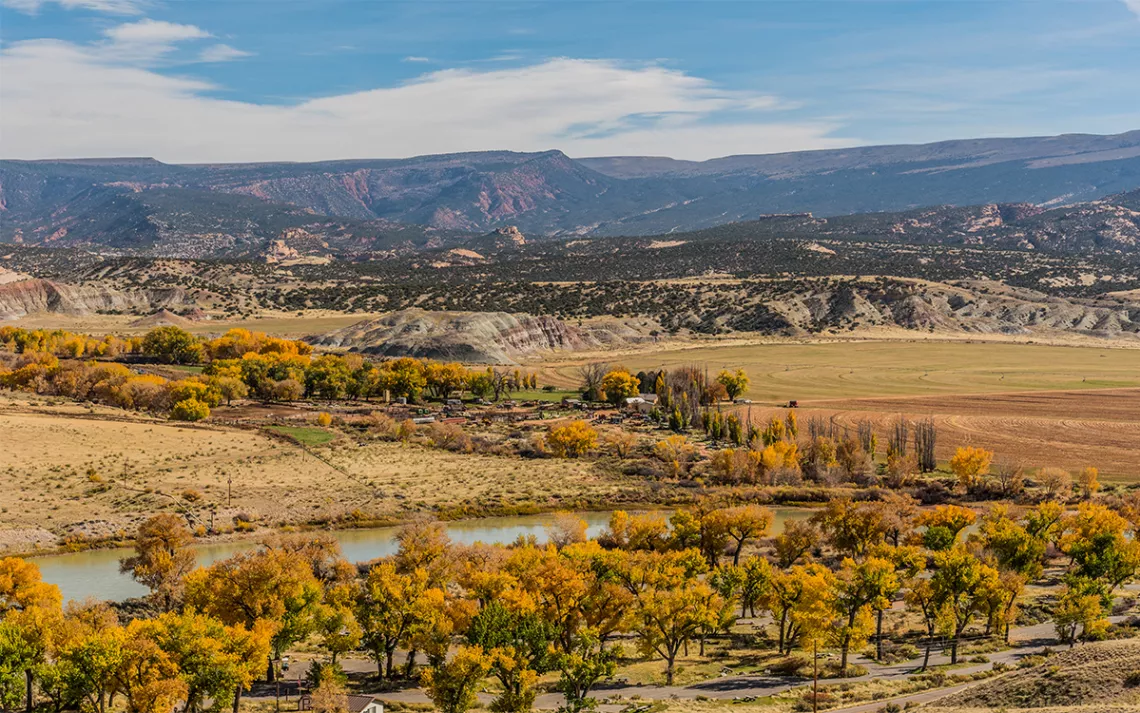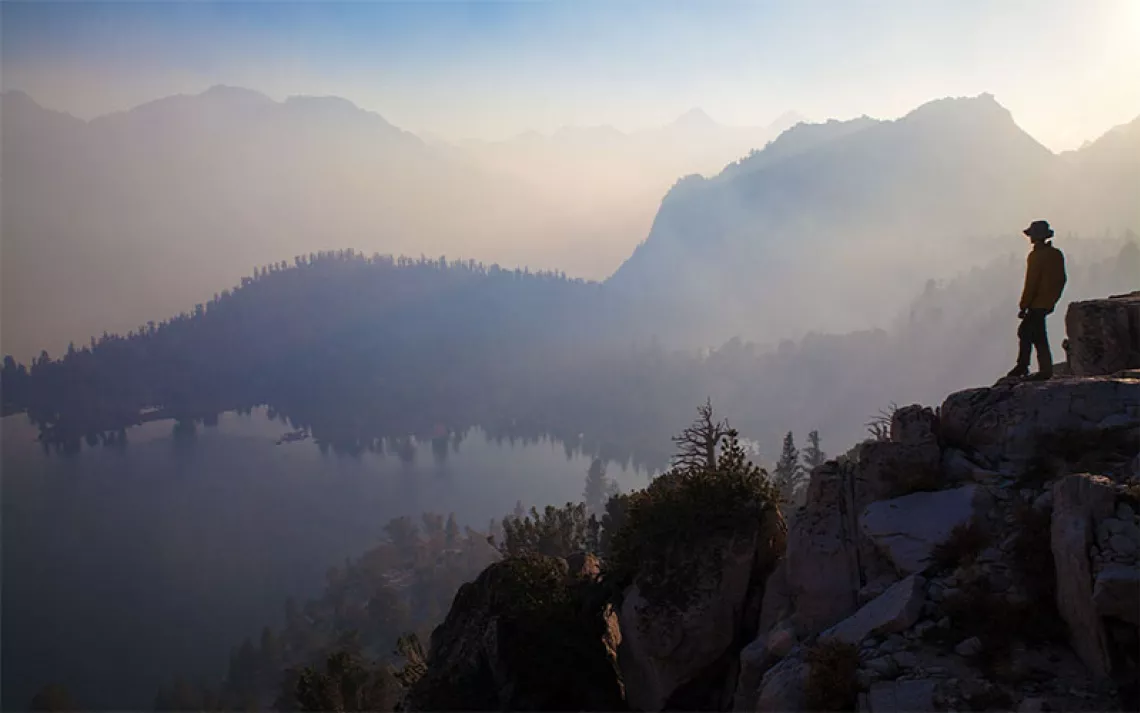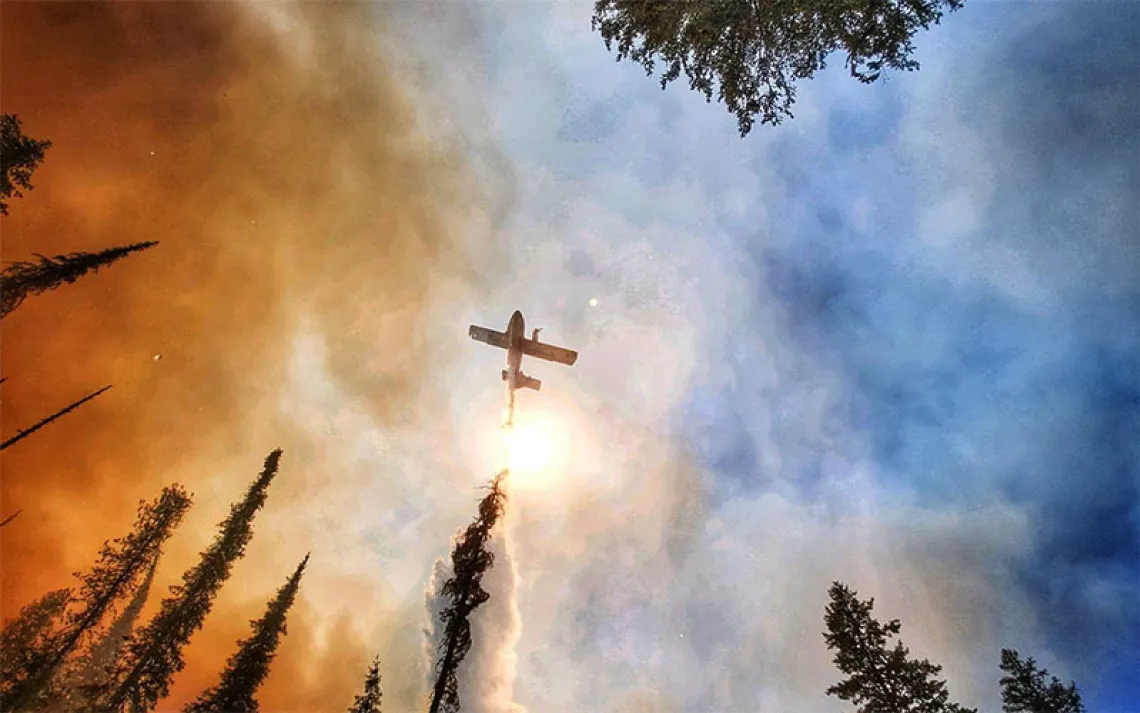Oil Drilling—Coming to a National Park or Monument Near You?
Former NPS officials and conservation groups mobilize to head off new leases

Photo by tristanbnz/iStock
You know that a proposed oil and gas lease is really, truly an awful idea when even Governor Gary Herbert, Utah’s normally pro–fossil fuel development leader, is against it.
This summer, Herbert wrote to federal officials, asking them to defer planned oil and gas lease sales near Dinosaur National Monument and Zion National Park. While the Bureau of Land Management did eventually decide to delay two planned lease sales near Dinosaur National Monument and defer the auctions on another three parcels near the entrance to Zion, conservation groups and some former National Park Service officials remain on high alert. They warn that the Trump administration’s rush toward “energy dominance” and its promise to increase oil, gas, and coal extraction on federal lands threatens dozens of protected sites across the country.
In North Dakota, federal officials are considering auctioning a 120-acre parcel adjacent to Teddy Roosevelt National Park for oil and gas exploration, a site that is already ringed with the oil infrastructure that popped up on the prairie during the Bakken boom. In New Mexico, new oil and gas development might be coming soon to the desert lands surrounding Chaco Culture National Historical Park. According to the National Parks Conservation Association, the government is also considering offering new oil and gas leases at sites near Hovenweep National Monument, on the Utah-Colorado border; near the Fort Laramie National Historic Site in Wyoming; near Capitol Reef National Park in Utah; and in proximity to New Mexico’s Carlsbad Caverns National Park, raising concerns that drilling there could damage or destroy as-yet-undiscovered cave systems.
And while the BLM did suspend two planned leases near Dinosaur National Monument after Governor Herbert’s protest, another four parcels in the area are still scheduled to go up for auction in December.
“We are disheartened that we haven’t seen any emphasis on landscape-scale thinking,” says Nicholas Lund, the senior manager for landscape conservation at NPCA. “And we’re disheartened by the sheer number of leases offered next to national parks.”
NPCA and other conservation groups are also worried about oil and gas drilling within some national parks. Unbelievable as it might sound, there are already more than 500 active oil and gas wells spread over 12 national parks. An additional 30 parks could be opened up to oil and gas drilling. Fossil fuel development is permissible at these sites because they are held in what are called “split estates.” While the federal government controls the surface rights, private individuals or entities hold the subsurface mineral rights. Parks that fall under this category—but where there’s currently no oil and gas drilling underway—include iconic sites such as Grand Teton, Everglades, Great Sand Dunes, and Mesa Verde.
Since the late 1970s, the Park Service has had rules in place to govern oil and gas development within national parks. In 2016, the Obama administration updated and strengthened those rules by, among other measures, requiring drilling companies to put up bonding money to restore sites after drilling is completed and to use the least damaging methods possible.
But those regulations—which Lund describes as “commonsense”—are now in jeopardy. In March, President Trump signed an executive order titled “Promoting Energy Independence and Economic Growth,” which directed federal agencies to make it easier to extract fossil fuels from public lands. The directive included a line ordering Interior Secretary Ryan Zinke to review the regulations governing drilling in the parks and, if they are found to be in conflict with the goal of energy dominance, to suspend or repeal them.
“This administration has been consistent about two things: Number one, they don’t like public lands. And number two, they love oil and gas and coal,” says Athan Manuel, director of the Sierra Club’s lands protection program. “And when those things meet, they will do whatever they can to increase drilling, even in places that are adjacent to national parks. No one goes to a national park to see an oil rig. These guys have a totally bizarro view of public lands.”
In response to the increasing threat of drilling in or near national parks, former NPS officials have organized to protest increased development. In August, more than 300 veteran Park Service officials signed a letter to Zinke expressing their opposition to new drilling near parks in the West. “We know from years of experience that people come to national parks with certain expectations,” the letter read. “They expect dark night skies and peace and quiet in the companionship of friends and family. But they do not expect national parks that are surrounded by oil and gas rigs, shrouded in haze, and disrupted by noise from industrial activity.”
Don Falvey was among the signatories of the letter to Zinke. He worked for the National Park Service for 28 years, including a nine-year stint as the superintendent of Zion National Park. Falvey says that when he was superintendent he worked closely with colleagues at the BLM to ensure that any oil and gas drilling in the area wouldn’t disrupt the park’s environment or impact the visitor experience. Now, he worries that such a spirit of cooperation is being lost. Oil and gas drilling near Zion, Falvey says, “would very negatively impact the park. Having development of that nature next to a national park—it’s just not fitting.”
Another signatory of the letter was Tom Vaughan, who worked for the Park Service for 23 years and who for many years was the superintendent of Chaco Culture National Historical Park in northeastern New Mexico. The park preserves the ancient center of the Chacoan Culture, a pre-Columbian civilization that flourished in the Four Corners region from roughly 800 to 1,100 AD. Significant oil and gas extraction is already underway to the north of the park; now Vaughan and others worry that an impending fossil fuel rush to the south and the west would lead to noise and light pollution. “Chaco is an international dark sky park, and any lights associated with mineral and energy exploration are going to be bad,” Vaughan says. “And then there’s the sound. It is so quiet there. It is so quiet, you can hear the resonance of the spadefoot toad croaking at night.
Vaughan is especially worried that an increase in oil and gas drilling in the area could disturb or destroy archaeological sites of significant value. While the park preserves the most impressive ruins of the Chacoan Culture—the former desert metropolis once located in Chaco Canyon—thousands of other archaeological sites are scattered throughout the surrounding desert. Vaughan says archaeologists are still piecing together their understanding of the Chacoan Culture and that losing undiscovered ruins to oil and gas development will set back that effort. “The only way we are going to find out the rest of the Chaco story is if we preserve the other sites that are out there,” Vaughan says. “So we need to have at least the ability for an intensive survey and the opportunity to sample the more significant sites before [oil and gas] exploration goes on.”
If Trump and Zinke have their way, and the BLM permits more drilling in the greater Chaco area, the time to conduct such a survey may be running out.
 The Magazine of The Sierra Club
The Magazine of The Sierra Club



